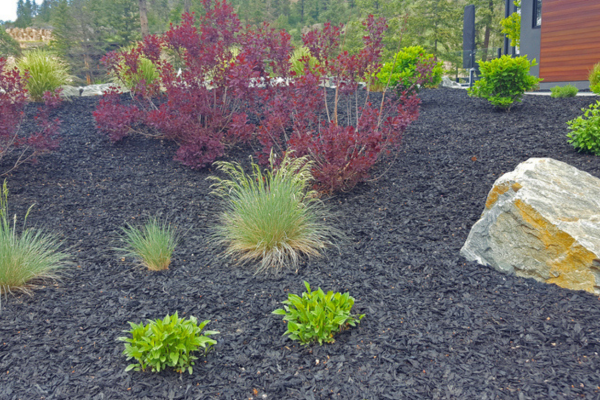
Bushfires are a serious hazard in many parts of Australia. Hotter, drier conditions and strong winds can cause fires to spread quickly, so gardens in bushfire-prone areas must be designed with safety in mind.
Design defensible space
Create a buffer zone around your home to slow down fire and give firefighters room to work. Keep vegetation well managed, avoid dense planting close to the house, and use non-combustible surfaces like gravel or paving near buildings. Thin out undergrowth and separate garden beds with open space to reduce the risk of radiant heat and ember attack.
Select low-flammability plants
Choose plants with high moisture content, low levels of oil and resin, and minimal leaf litter. Avoid species that ignite easily, such as those with dry or peeling bark. Consider deciduous trees and shrubs, and maintain all plants with regular pruning to reduce fuel loads.
Use hardscaping and fire breaks
Paved paths, stone walls, gravel areas and retaining walls can act as fire barriers. Place these features strategically to interrupt the spread of flames and protect vulnerable areas of the home.
Prioritise maintenance
A tidy garden is a safer garden. Remove dead leaves, twigs and branches, keep lawns short, and store firewood away from the house. Regularly check gutters and roof spaces for debris that could ignite.
Think holistically across landscaping and construction
Bushfire-resilient gardens work best when planned alongside home design. Consider access for emergency vehicles, water supply for firefighting, and how planting, paths and structures will work together to create a safer property.
Bushfires are a serious hazard in many parts of Australia. Hotter, drier conditions and strong winds can cause fires to spread quickly, so gardens in bushfire-prone areas must be designed with safety in mind.
Design defensible space
Create a buffer zone around your home to slow down fire and give firefighters room to work. Keep vegetation well managed, avoid dense planting close to the house, and use non-combustible surfaces like gravel or paving near buildings. Thin out undergrowth and separate garden beds with open space to reduce the risk of radiant heat and ember attack.
Select low-flammability plants
Choose plants with high moisture content, low levels of oil and resin, and minimal leaf litter. Avoid species that ignite easily, such as those with dry or peeling bark. Consider deciduous trees and shrubs, and maintain all plants with regular pruning to reduce fuel loads.
Use hardscaping and fire breaks
Paved paths, stone walls, gravel areas and retaining walls can act as fire barriers. Place these features strategically to interrupt the spread of flames and protect vulnerable areas of the home.
Prioritise maintenance
A tidy garden is a safer garden. Remove dead leaves, twigs and branches, keep lawns short, and store firewood away from the house. Regularly check gutters and roof spaces for debris that could ignite.
Think holistically across landscaping and construction
Bushfire-resilient gardens work best when planned alongside home design. Consider access for emergency vehicles, water supply for firefighting, and how planting, paths and structures will work together to create a safer property.





